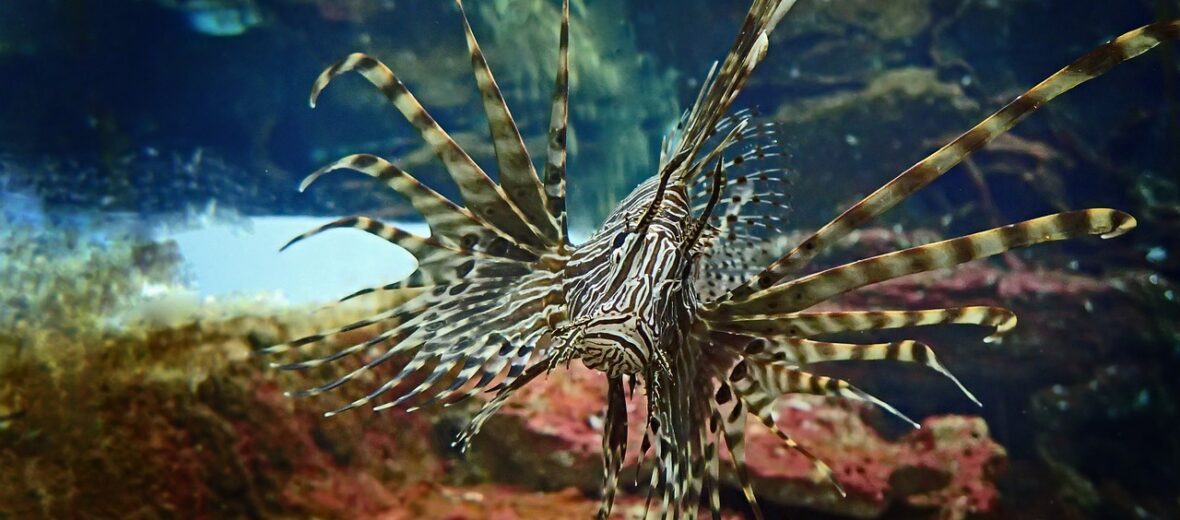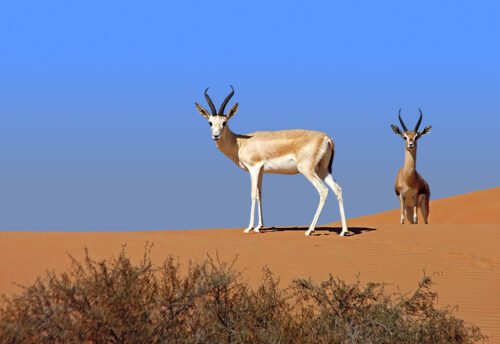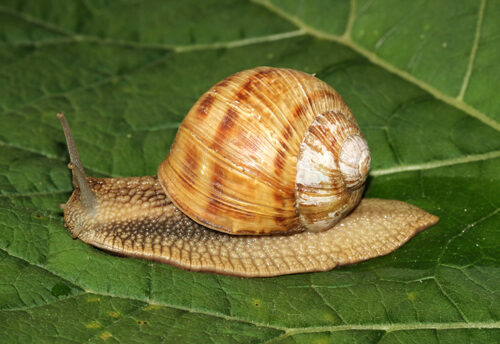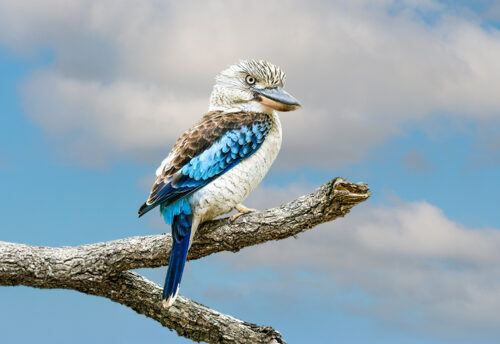
The lionfish, aka firefish, zebrafish, turkeyfish, scorpionfish, and butterfly-cod, is a venomous fish typically found in the Pacific and Indo-Pacific oceans. There are 10 known species of lionfish. In North America, they are considered highly invasive as they reproduce quickly and don’t have many natural predators. They typically live around coral reefs and rocky alcoves. They have also been found in estuaries, up to 4 miles inland, living in brackish water. Due to their numbers and highly invasive nature they are listed as Least Concern by the IUCN.
First the Stats…
Scientific name: Pterois
Weight: Up to 2 lbs.
Length: Up to 15 inches
Lifespan: Up to 15 years
Now on to the Facts!
1.) Under their mouths and above their eyes are wigglers. These are fleshy appendages used to lure prey in close so they can engulf them with a swift bite.
2.) Lionfish don’t chew their food. Instead then swallow their prey whole.
3.) They have been documented at depths of up to 1,000 feet.
4.) These underwater lions are equipped with up to 18 venomous spines on their dorsal region.
5.) Lions stomachs can stretch up to 30 times their normal size!
But wait, there’s more on the lionfish!
6.) These voracious predators prey on up to 70 species of fish and crustaceans.
7.) They are crepuscular (active at dawn and dusk).
Did you know…?
The venom of a lionfish causes dizziness, nausea, vomiting, difficulties breathing, and extreme pain!
8.) Females lay up to 30,000 eggs every week!
9.) Egg sacs contain a special chemical that discourages other fish from eating the eggs.
10.) On top of all their other features that lend to them being invasive, they can also go up to 3 months without food.
11.) Sharks, groupers, cornetfish, large eels, frogfish, and even other scorpionfish prey on lionfish.
Now a Short Lionfish Video!
Also, check out the Critter Science YouTube channel. Videos added frequently!
Want to suggest a critter for me to write about? Let me know here.



